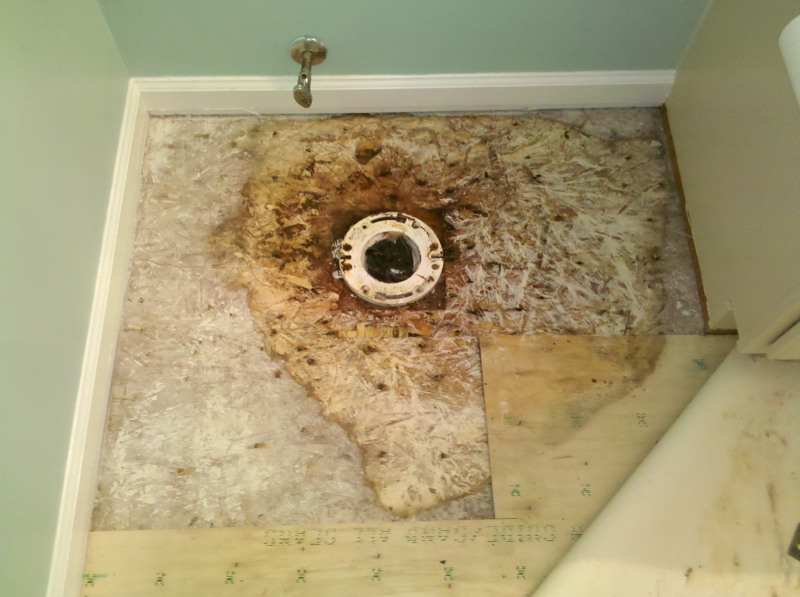Searching for Indications of Water Damage in the Bathroom
Searching for Indications of Water Damage in the Bathroom
Blog Article
Nearly everybody seems to have their own theory with regards to Looking for Signs of Water Damage in the Bathroom.

The washroom is exceptionally vulnerable for wet buildup and potential water damage due to the frequent use water in it. This write-up supplies straightforward inspection techniques to help detecting water damage hazards.
The frequent use water in the washroom makes it very prone for damp build-up and potential water damage. By inspecting it consistently, you can minimize water associated damages.
The following collection of inspections is very easy to execute as well as ought to be done once in every 3 months in order to maintain your bathroom healthy and also to avoid potential water problems brought on by the tub, the shower, pipe joints and plumbing, sinks, cabinets, and also the commode
Do not disregard doing these inspections and also be detailed while doing them. Bear in mind that these simple examinations can conserve you a lot of cash by supplying early indications for water damages
Tub and Shower
The shower and also tub require unique interest and upkeep. Inspect the tiles and also replace if fractured. Make certain that there is no missing cement between the tiles. Examine and also change broken caulking at joints where the wall surfaces satisfy the flooring or the tub. Obstructed drains pipes and pipes issues will certainly avoid the bathtub from drying out and might indicate significant problems under the tub. Consult with an expert instantly to stop structural damages. Take note of stainings or soft areas around the tub walls as they might show an interior leakage.
Plumbing
Signs for water damage are tough to spot given that the majority of pipes are mounted inside the walls.
Pay unique interest to floor covering as well as walls wetness and spots as they may suggest an invisible plumbing trouble. Check dampness levels in adjacent rooms also.
Sinks and Cabinets
Sinks as well as cabinets are subjected to dampness as well as moisture daily and also are frequently forgotten. Examine consistently under the sink and on the kitchen counter above it. Fix any kind of drip in the trap as it might suggest drainpipe issues. Take a look around the sink, sluggish draining pipelines may indicate an obstructed drain. Change sink seals if they are broken or loose.
The Bathroom
The toilet is an at risk water junction. Inspect the water lines and also search for leakages around the commode seat, in the hose pipe, as well as under the water tank. If you discover any kind of signs of wetness on the flooring around the commode, look for leaks in the toilet rim and also tank seals.
Understand that hanging bathroom dish antiperspirants increases the possibilities for obstructions.
Water Damage Signs In The Bathroom To Avoid Cleanup
Musty smell
This is one of the easiest signs to catch because musty smells are so odorous. The damp, earthy, moldy smell should be a big red flag. The smell will develop when moisture gets trapped in surfaces, and begins to facilitate mold growth. Leaking pipes under cabinets, inside walls, and behind shower fixtures will cause moisture to stay trapped and not dry, which will lead to mold growth and spread. As soon as you notice any musty smells in your bathroom, have it checked for hidden water damage and cleanup signs.
Visible mold
If the smell isn’t there to give it away, sometimes you will actually see mold growth. Finding mold in your bathroom is a serious problem, because mold is very harmful to your health. By the time mold growth is visible, it also means that water damage has already occurred and been present for some time. The only way the mold problem can be resolved is to find the source of the moisture and get it stopped. To safely and adequately remove mold, you need to have professionals handle the remediation. Do not waste any time in getting mold problems addressed, fixed, and sanitized so that you can protect you and your family from the many respiratory symptoms caused by mold exposure.
Damaged floors
Bathroom floors should be able to withstand some exposure to water while still remaining in good condition. However, when excess exposure or water leaks occur, they will begin to damage even the most water-resistant flooring. If you notice any cracking, bubbling, staining, or warping on your bathroom floors, there is probably a water leak somewhere causing the distortion. If you notice areas of the floor have become softer, or even have a spongy feeling, there is probably damage to the subfloor. Subflooring is typically made up of plywood. When plywood is exposed to water or moisture, it will absorb it. Once it has become saturated, the weight of the excess water will cause the wood to swell and soften. Check the floors in your bathroom frequently to catch any of these sings before they lead to damaged subflooring.
Changes on walls
When water leaks behind walls, it will cause changes in the drywall. Peeling plaster, blistering paint, and soggy wallpaper are all good indicators that excess water is building up behind the wall. Water leaking behind drywall will cause it to swell and be soft to the tough. If you start to notice gaps along the trim of your walls, or where tile meets the wall, it could also be a strong indicator that there is a leak behind the wall. Any changes, distortion, or damage on the walls should be evaluated as soon as you notice it to prevent further water damage and cleanup.

We hope you enjoyed our section about Looking for Signs of Water Damage in the Bathroom. Thank you for finding the time to read through our short article. Sharing is good. Helping people is fun. Many thanks for your time. Kindly come by our blog back soon.
Schedule An Appointment Report this page